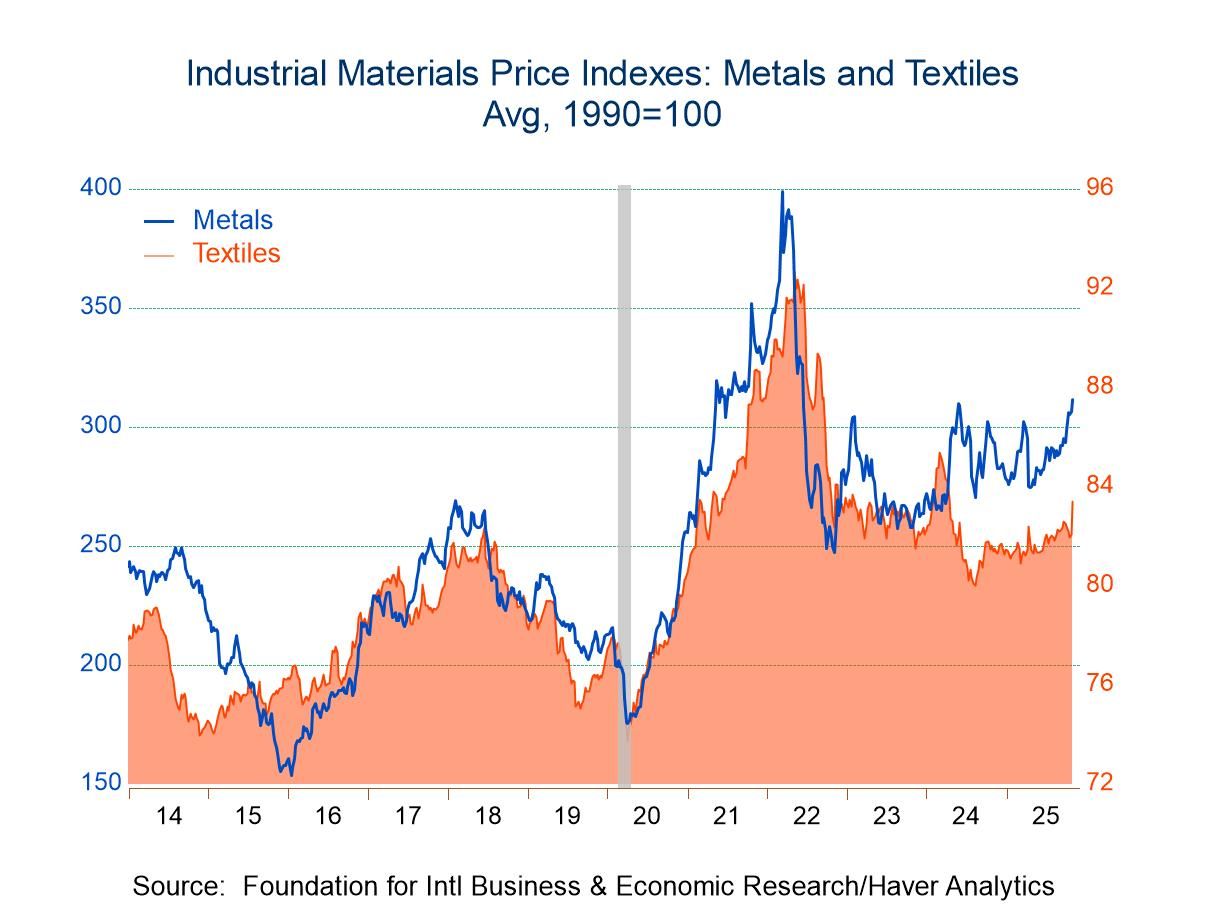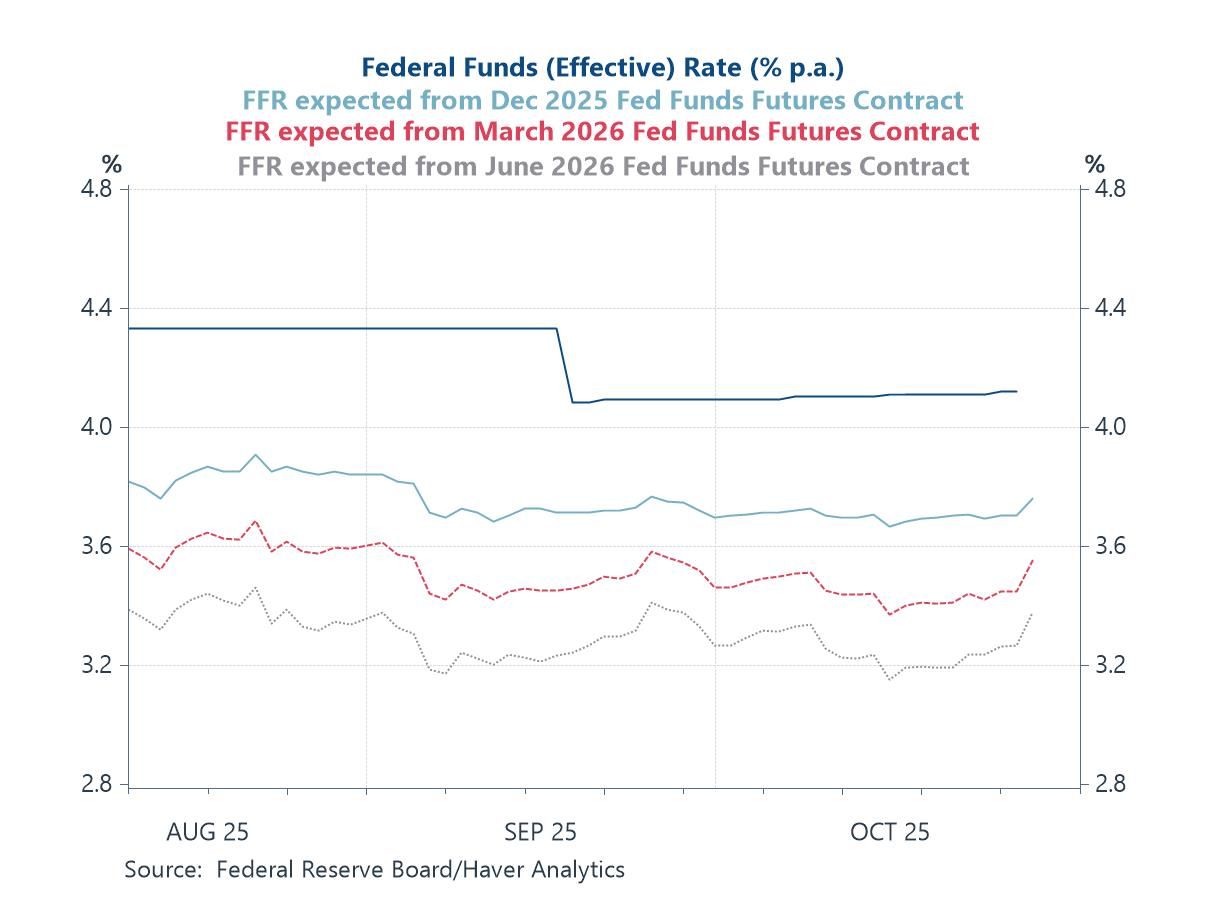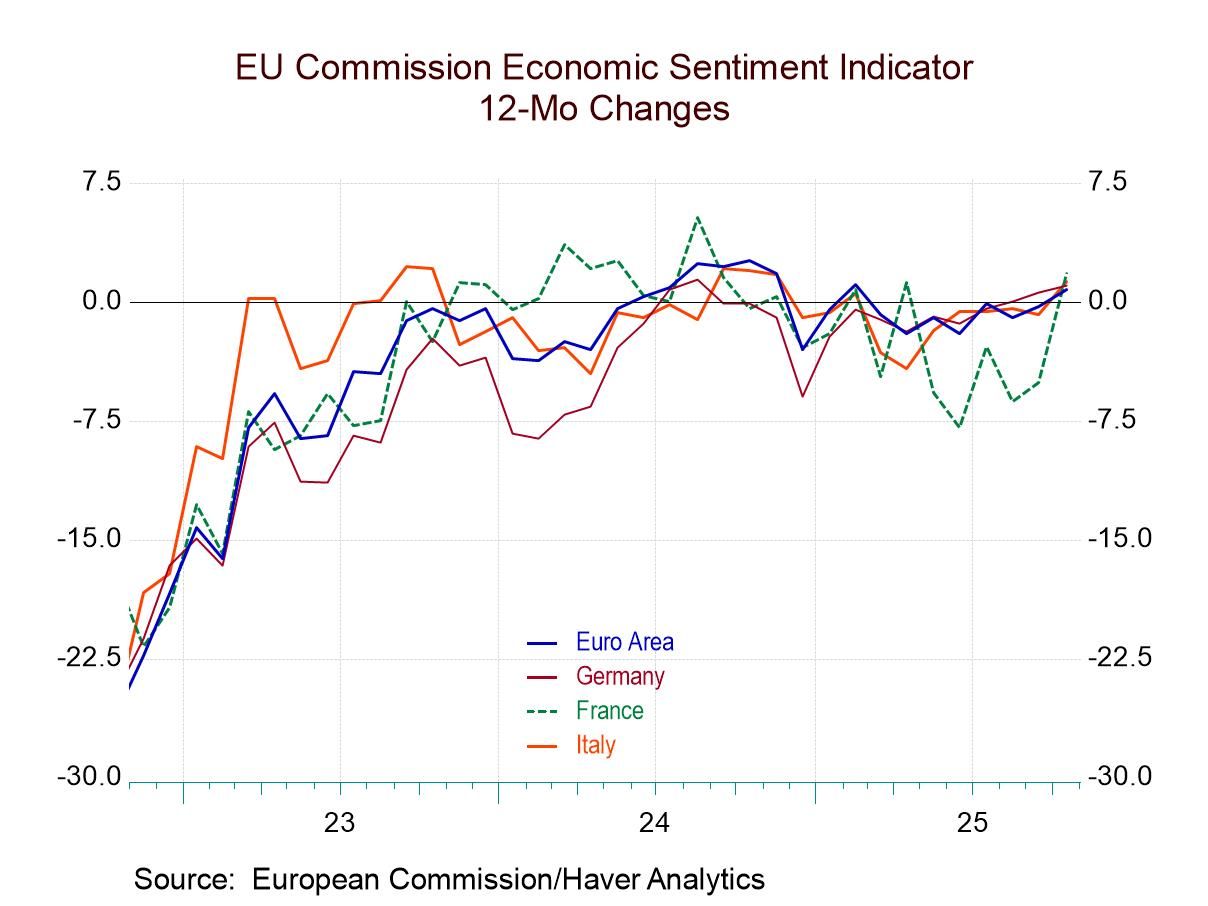 Global| Aug 04 2017
Global| Aug 04 2017German Orders Make Second Strong Monthly Gain in a Row As the Domestic and Foreign Trends Diverge
Summary
In June, German domestic orders rode to the rescue. Domestic orders jumped by 5.1% month-to-month in June after sinking by 1.9% in May and after creeping ahead by only 0.1% in April. The gain has boosted domestic orders to an [...]
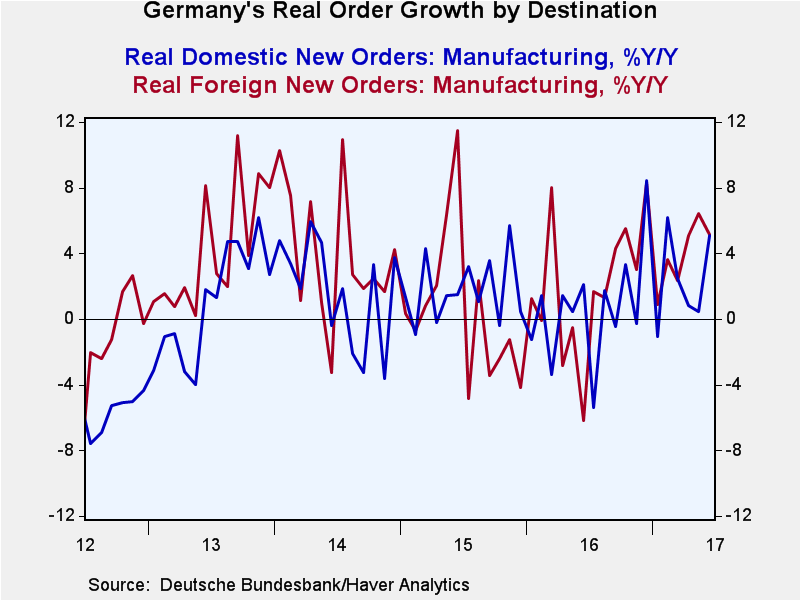 In June, German domestic orders rode to the rescue. Domestic orders jumped by 5.1% month-to-month in June after sinking by 1.9% in May and after creeping ahead by only 0.1% in April. The gain has boosted domestic orders to an accelerating path on an annualized three-month growth rate of 13.7%, up from 5.1% over 12 months. The gain was strong enough to bring total orders to three-month and six-month growth rates to zero in the face of foreign order weakness. Foreign orders are decelerating, dropping from a 12-month pace of 5.2% to a six-month pace of -4.5% to a three-month pace of -8.8%. German domestic and foreign trends are polar opposites. Over 12 months, however, everything seems fine with total orders growing at a 5.2% pace, foreign orders growing at a 5.2% pace and domestic orders growing at a 5.1% pace. The turbulence is in the short-term growth rates and in short-term momentum.
In June, German domestic orders rode to the rescue. Domestic orders jumped by 5.1% month-to-month in June after sinking by 1.9% in May and after creeping ahead by only 0.1% in April. The gain has boosted domestic orders to an accelerating path on an annualized three-month growth rate of 13.7%, up from 5.1% over 12 months. The gain was strong enough to bring total orders to three-month and six-month growth rates to zero in the face of foreign order weakness. Foreign orders are decelerating, dropping from a 12-month pace of 5.2% to a six-month pace of -4.5% to a three-month pace of -8.8%. German domestic and foreign trends are polar opposites. Over 12 months, however, everything seems fine with total orders growing at a 5.2% pace, foreign orders growing at a 5.2% pace and domestic orders growing at a 5.1% pace. The turbulence is in the short-term growth rates and in short-term momentum.
Intermediate goods saw new orders rise by 3.7% compared with May 2017. The manufacturers of capital goods showed a decrease in orders of 0.8% on the previous month. For consumer goods, new orders increased by 2.3% month-to-month.
In June, there was a 5.1% surge in orders from within Germany while demand from abroad fell 2.0%. Orders from euro area neighbors declined 2.4% while demand from the rest of the world fell by 1.5%.
Sales trends
Real sector sales saw a gain of 0.3% in June as the three-month pace ramped up to 7% from what had been fairly steady growth around the 3.5% mark over six months and 12 months. While sales are not on a steadily accelerating path, over three months the sales of consumer goods, intermediate goods and capital goods all are at a faster pace than over 12 months.
Q2 is firm to strong
In the just completed second quarter, real orders are up at a 3.2% pace led by foreign orders at a 4.2% pace as domestic orders only managed at 1.9% rise over their Q1 level. Real sector sales rose at a 6.1% pace led by consumer goods at an 11.8% pace with intermediate goods sales at 8.4% and capital goods at a 4.0% pace.
Good news with a caveat
On balance, these are solid numbers for Germany. The contrary domestic-foreign trends are a bit unsettling. Also it is hard to know what to make of the current trend since domestic orders have gathered so much strength from their one-month gain in June.
Summing up
Still, the context for Germany is that the the IFO survey has been strong along with the perceptions of the ZEW experts. Industrial output has been growing and the Markit sector PMI gauges have showed strength in manufacturing even if the German services sector has been lagging (but still growing). In surrounding countries, European gauges have been looking firm. The big uncertainties for Europe right now concern the ECB since inflation remains below target, issues regarding Brexit and concerns about restive border activity from Russia around the Baltic region and in Ukraine. Even so, Europe has joined the U.S. to place more sanctions on Russia in the wake of the Siemens scandal. The economic side of the ledger appears strong with the German unemployment rate at a reunification low and spending back in gear. The orders report adds to the sense of economic well-being with its headlines, but once again the details give us a bit more reason to wonder and gives pause to the complete onset of optimism.
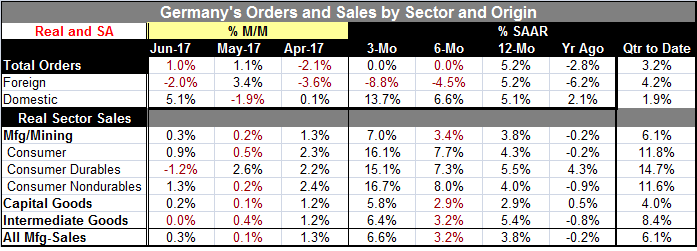
Robert Brusca
AuthorMore in Author Profile »Robert A. Brusca is Chief Economist of Fact and Opinion Economics, a consulting firm he founded in Manhattan. He has been an economist on Wall Street for over 25 years. He has visited central banking and large institutional clients in over 30 countries in his career as an economist. Mr. Brusca was a Divisional Research Chief at the Federal Reserve Bank of NY (Chief of the International Financial markets Division), a Fed Watcher at Irving Trust and Chief Economist at Nikko Securities International. He is widely quoted and appears in various media. Mr. Brusca holds an MA and Ph.D. in economics from Michigan State University and a BA in Economics from the University of Michigan. His research pursues his strong interests in non aligned policy economics as well as international economics. FAO Economics’ research targets investors to assist them in making better investment decisions in stocks, bonds and in a variety of international assets. The company does not manage money and has no conflicts in giving economic advice.



